How many common types of espresso are there? a simple method to distinguish the types of espresso.
Professional coffee knowledge exchange more coffee bean information please follow the coffee workshop (Wechat official account cafe_style)
For more boutique coffee beans, please add private Qianjie coffee on Wechat. WeChat account: qjcoffeex
Do you feel a little confused when you stand at the counter of a coffee shop and look at a wide variety of coffee products, such as lattes, cappuccinos or macchiato? This time, Qianjie Coffee specially collates a list of types of espresso coffee, which not only allows you to recognize the differences in coffee flavors, but also details the proportion of coffee prepared.
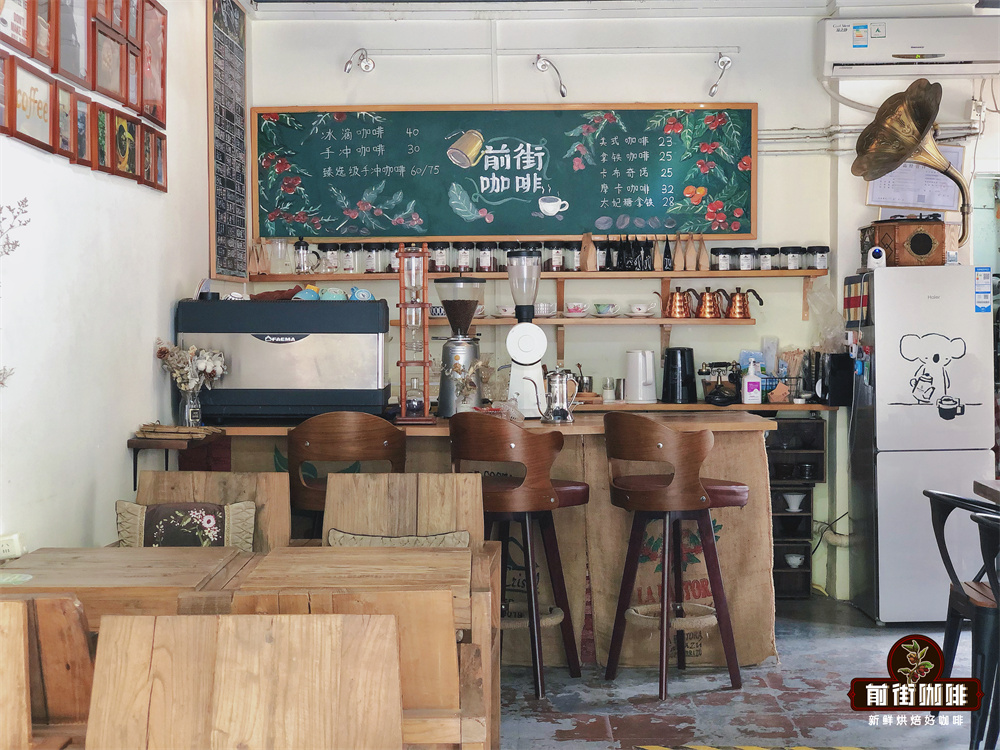
Types of espresso
All the espresso products we see are based on espresso with different proportions of milk, water, or other ingredients to produce a variety of products.
The production of espresso requires the use of pressurized espresso machine for extraction. Coffee shops usually use freshly roasted Italian coffee beans / individual coffee beans for very fine grinding, then put the coffee powder into the powder bowl in the handle of the coffee machine, fill it evenly, and then fasten it in the head of the coffee machine.
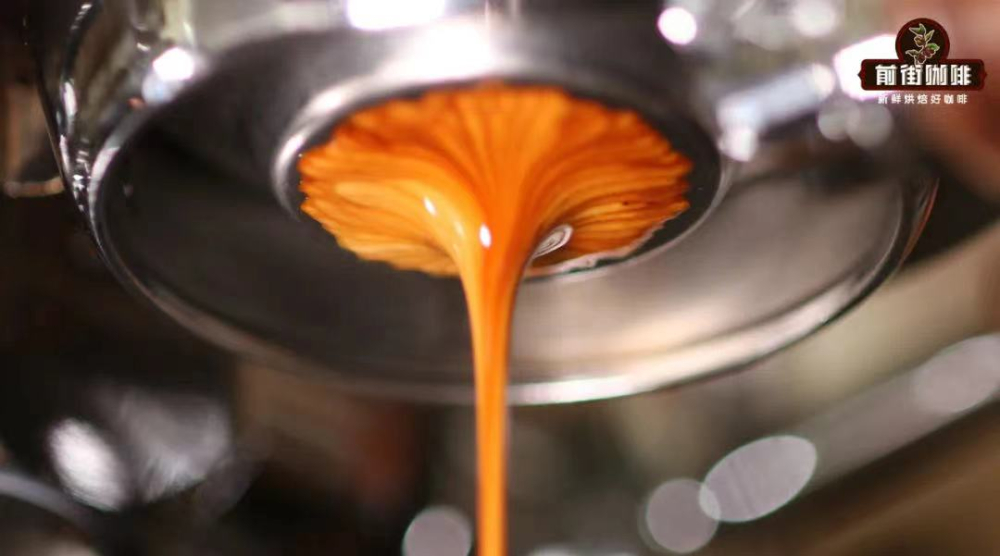
Then press the extraction key, 94 degrees hot water will be pressurized in a vacuum, and quickly through the coffee powder layer, extract 1:2 powder ratio, very high concentration of espresso. Due to the high concentration, the addition of water / milk or other ingredients can still show the taste of coffee, and it takes a short time to make espresso. Espresso was loved by consumers when it was invented.
Qianjie Coffee extract espresso, using Italian coffee beans. Because blended coffee beans can be matched by coffee beans from different producing areas to achieve the stability that coffee beans in a single producing area (single coffee beans) lack (because coffee beans belong to crops, the quality and taste performance of each year are affected by soil climate).
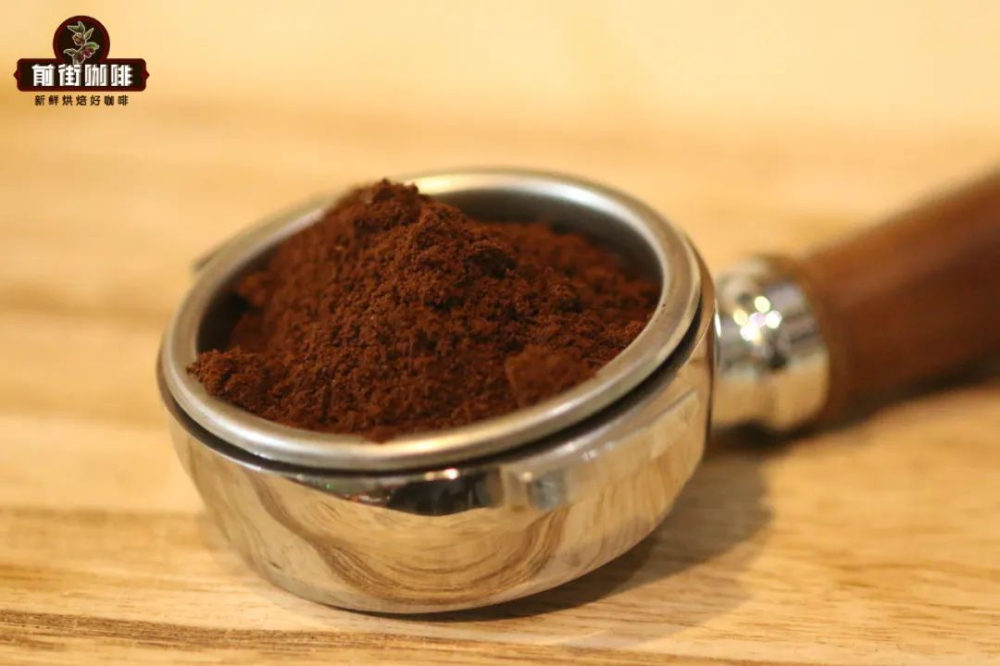
Qianjie Coffee is produced in daily stores, using self-made, freshly roasted sunflower sunflower coffee beans, Ethiopian sun Yega Shirley + Honduran Shirley. The extracted espresso shows fermented wine, berries, vanilla cream, nut caramel, rich and smooth taste and special flavor. Whether it is making Italian milk coffee or American coffee, it can show the attractive aroma of vanilla cream and fermented wine.
Each extraction of espresso depends on the size of the powder bowl, so there are different limits on the use of powder. Qianjie Coffee in the production of single espresso (1shot), will use 10-11 g coffee powder, extract 20-25 g coffee liquid extraction, extraction time of about 22 seconds; to make double espresso will use 19-20 g coffee powder, make 35-40 g coffee liquid, extraction time is about 29 seconds.
The practice of American coffee
When American soldiers came to Italy during World War II, they drank espresso made by unaccustomed espresso machines, so they added a lot of hot water to espresso to dilute the flavor.
This move amazed the Italians, so they called this American drink "Americano", which means "American" in Italian. When Americans hear this slightly sarcastic title, instead of a pestle, they feel smug, so the name Americano has spread, referring to the way espresso is diluted with hot water.
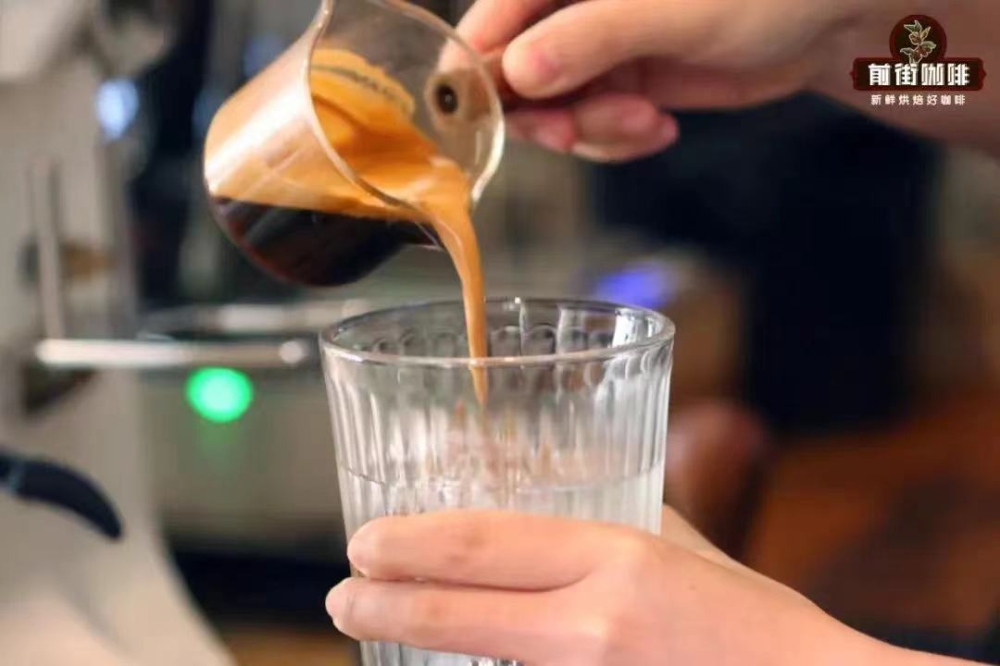
There is no regulation on the amount of water in American coffee, so you can adjust it according to your taste. Qianjie Coffee usually uses double espresso (40g) and 200ml's hot / ice water mixture to make American coffee.
The practice of latte
Caffe Latte is Italian, meaning coffee latte, and Latte means Italian milk. If you go to a coffee bar in Italy and tell the barista that you want a Latte, the barista may look at you with a puzzled look on his face and give you a glass of milk. To get a coffee latte in Italy, you have to say "Caffe Latte" to get an authentic Italian coffee latte.
However, the latte you ordered in Italy is likely to have no milk foam, because the foam machine was invented later and first appeared in the United States in the 1950s and 1960s. Before that, lattes had only direct espresso with milk, no foam.
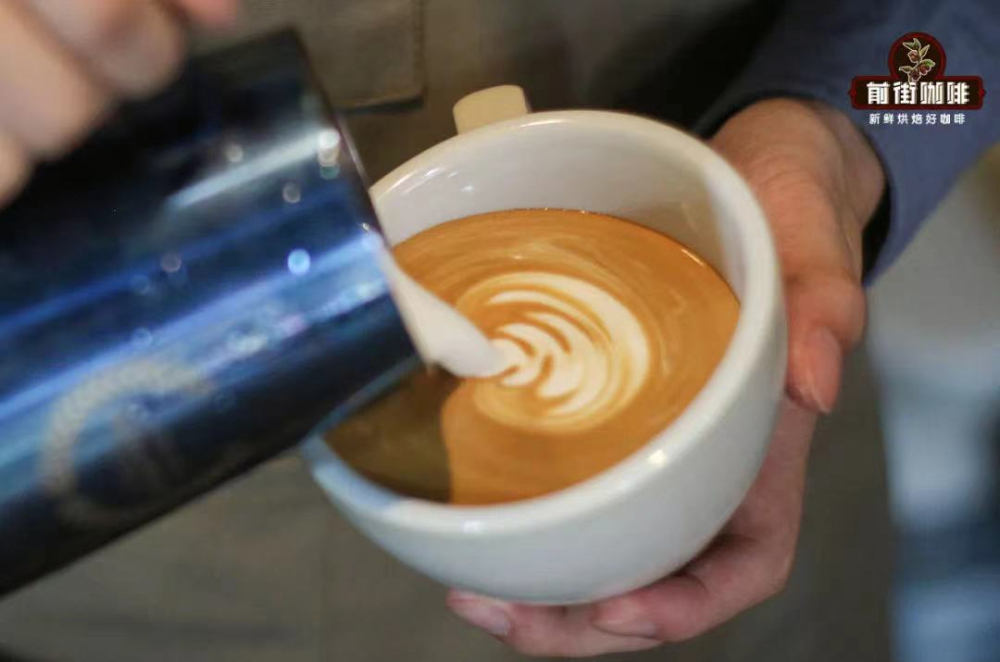
In terms of composition, the latte is 1/5 espresso, 2/5 hot milk and 2/5 milk foam. Latte flavor, with espresso and milk as the dual protagonists, taste the synthesis and balance of the two, is the most unique flavor of the latte. The front street coffee latte is usually made from a double espresso (40g), with 250ml of hot / iced milk mixed with smooth foam.
The practice of cappuccino coffee
The difference between a cappuccino Cappuccino and a latte is that cappuccino espresso accounts for more. It consists of 1/3 espresso, 1/3 hot milk and 1/3 milk foam. Cappuccino can also be sprinkled with cocoa and cinnamon to enhance flavor. In terms of taste, it is based on the flavor of coffee, with milk as the match.
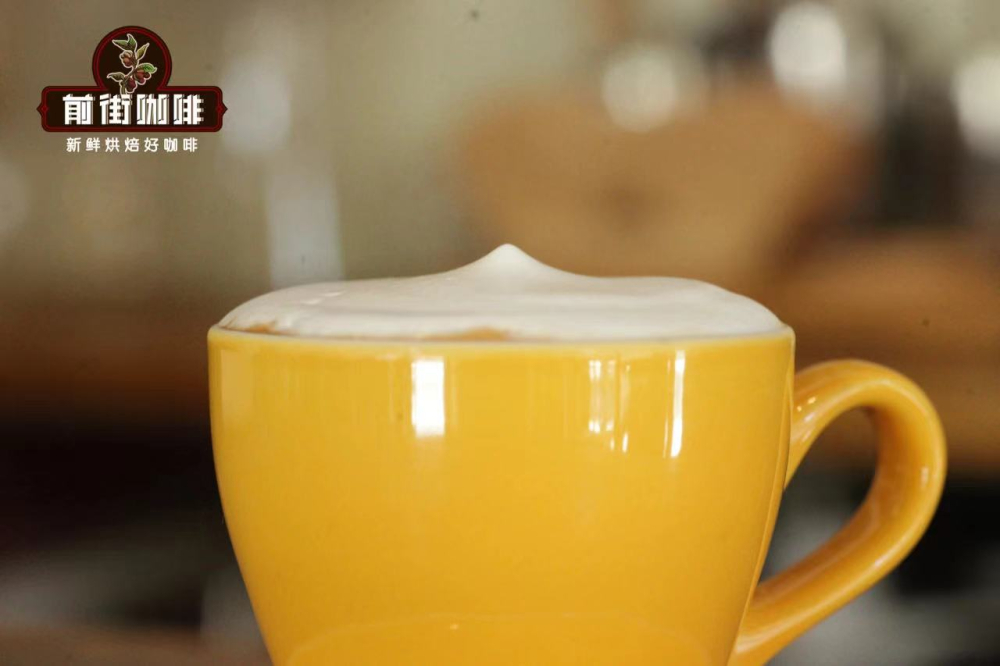
Qianjie Coffee makes cappuccino coffee, usually using double espresso (40g) and 180 milliliters of hot milk with thick foam.
The practice of mocha coffee
Mocha yuan is originally the name of a famous Yemeni port that exports coffee beans locally produced in this nearby country. These coffee beans have a strong chocolate flavor, and later mocha coffee was generally referred to as a special variety of coffee beans with chocolate aroma. But then the port was dismantled and Europeans in order to drink the same flavor of coffee added chocolate sauce / cocoa powder to milk coffee and became what we now know as Italian mocha coffee.
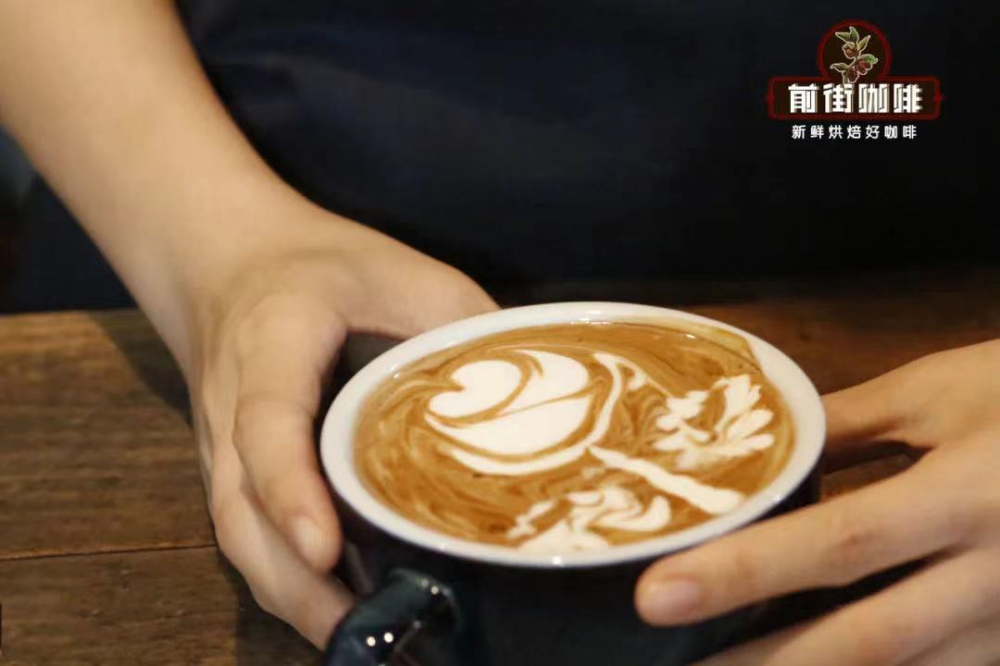
The front street coffee latte is usually made of double espresso (40g) + the right amount of chocolate sauce / cocoa powder, plus 250ml of hot milk / ice milk with smooth foam.
Important Notice :
前街咖啡 FrontStreet Coffee has moved to new addredd:
FrontStreet Coffee Address: 315,Donghua East Road,GuangZhou
Tel:020 38364473
- Prev
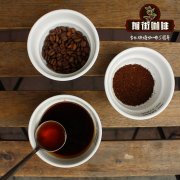
What is the Association of World authoritative organizations of Fine Coffee
Professional coffee knowledge exchange more coffee bean information please follow coffee workshop (Wechat official account cafe_style) boutique coffee introduction knowledge world-class boutique coffee association many countries have developed their own boutique coffee association, Taiwan is no exception, but for baristas around the world, there are two associations that must know, they provide a variety of courses, testing
- Next
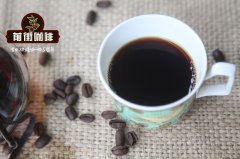
The characteristics and flavor of Latin American coffee beans introduce how to process Latin American coffee beans.
Professional coffee knowledge exchange more coffee bean information please follow the coffee workshop (Wechat official account cafe_style) South American bean flavor: generally speaking, the flavor is relatively regular. The Brazilian coffee is mellow and full-bodied, while the Costa Rican coffee is gentle and supple, with a blend of sour, sweet and chocolate aromas. Panamanian coffee is rich in citrus and jasmine.
Related
- Beginners will see the "Coffee pull flower" guide!
- What is the difference between ice blog purified milk and ordinary milk coffee?
- Why is the Philippines the largest producer of crops in Liberia?
- For coffee extraction, should the fine powder be retained?
- How does extracted espresso fill pressed powder? How much strength does it take to press the powder?
- How to make jasmine cold extract coffee? Is the jasmine + latte good?
- Will this little toy really make the coffee taste better? How does Lily Drip affect coffee extraction?
- Will the action of slapping the filter cup also affect coffee extraction?
- What's the difference between powder-to-water ratio and powder-to-liquid ratio?
- What is the Ethiopian local species? What does it have to do with Heirloom native species?

